
As part of my role as Scottish correspondent for Groundtastic magazine I wrote a number of club articles dedicated to a particular stadium. I hugely enjoyed visiting new towns and cities to unearth some architectural gems of the football world. As a roving reporter I visited Tynecastle, Firs Park, Victoria Park, Borough Briggs, and completed a tour of the football grounds of the Highland League to name but a few.
I have recently been watching the vlogs of Footy Adventures, which I would heartily recommend to those of you who are interested in football stadiums and architecture. These vlogs are exactly the sort of thing that I would have been producing if things were different. Sadly, I have been held back by a progressive, genetic disease of the nervous system, the related disability, a lack of technical expertise to produce videos and being in Scotland at the wrong time, with the wrong person.
I suppose what I have done as an alternative is to write Every Silver Lining has a Cloud, which is an autobiographical tour of the Welsh Premier League football grounds. For those who have yet to read it – shame on you. I am happy with my own contribution to the world of football architecture, but I can’t help having feelings of envy and jealousy as I watch the ever increasing body of vlogs produced by Footy Adventures.
I have decided to reproduce the club articles and photographs that I managed to take during my time in Scotland. This was a difficult time for myself as I was beginning to feel the full effects of living with Friedreich’s Ataxia. It would obviously difficult having to rely on trains to get me to my desired destination and the fact that I was losing my dexterity meant that it was increasingly difficult to take decent photographs.
Thankfully, I have managed to find all of my photographs from my travels around the Highland League football grounds way back between the years 2002 – 2006. Much of the information about the grounds will have changed drastically. Indeed, the Highland League itself is now made up of a different line-up of clubs. I believe that this makes the snapshot that I have provided below, even more interesting to football ground enthusiasts. These articles were published in Groundtastic magazine 46-48 during 2006 and I would encourage everyone to subscribe to this excellent production.
Overall, I am happy with my contribution to the magazine, and hope the following is of interest to some of you. The articles appear in their original form, but I have updated some of the archaic website addresses that certain clubs had.
***
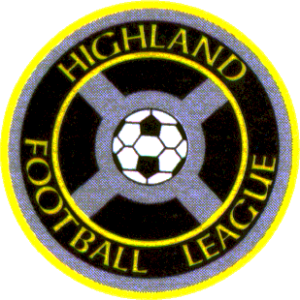
Concluding my three-part focus on the grounds of the Highland League, written and researched for Groundtastic magazine back in 2006.
Bellsea Park – Fraserburgh

Bellsea Park is very basic with one old Main Stand and very little else.

The Stand seats 480 supporters, houses changing rooms and offices underneath the seats and has two steps of terracing at the front.
Directly opposite this stand is an empty side and there looks like very little room for supporters to stand between the touchline and the perimeter wall. The only structures on this side of the pitch are two lonely looking dug-outs.
The areas behind the goals are uncovered, grass embankments.
For more information on Fraserburgh FC, click here.
Allan Park – Cove Rangers

Allan Park [or Rainbow Taxis Park as it is currently known] is positioned right next to the North Sea, so make sure you wrap up warm if you are attending a match in the winter months.
At first glance the ground looks pretty basic but on closer inspection there are many features you wouldn’t expect to find at a Highland League ground. As you would expect at this level, the areas behind both goals are uncovered although there are a few steps of terracing at one end.
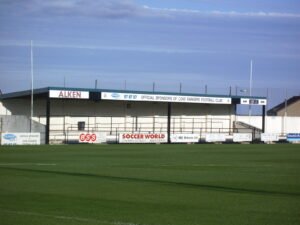
Along one side, stands a fairly typical covered terrace next to a ramshackle pie stall while directly opposite is the social club and executive viewing area. This glass-fronted lounge is built on top of the social club and affords a great view of the action. It accommodates match sponsors and club directors who must be attracted back to Allan Park after watching the game in luxury.

The dug outs are positioned in front of the social club while I was also impressed to find a glass-fronted Press Box for the comfort of match reporters.
There are four floodlight pylons at the ground – one in each corner – each with five lamps on. Two of the pylons are actually mobile phone masts.
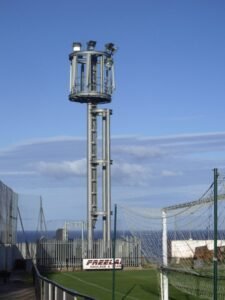
For information on Cove Rangers FC, click here.
Claggan Park – Fort William

Claggan Park is the most scenic ground I’ve ever been to. It is situated near the foot of Ben Nevis and with such views in front of you it is hard to pay attention to the football. This is probably just as well. Fort William are the whipping boys of the Highland League.
Unfortunately, apart from the surrounding scenery there is little else that impresses about Claggan Park. The only shelter offered is in the Main Stand – a poorly maintained structure that houses several rows of plastic benches. To make matters worse there are several roof supports running across the front of the stand, impeding the view for patrons.
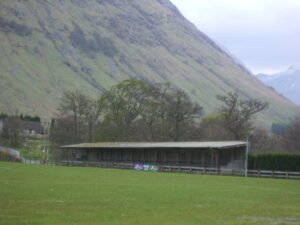
Apart from this stand there is nothing else of note in the ground apart from a changing block used by the players situated in the corner of the ground and the presence of an electrical substation at the far end.
Claggan Park also suffers bad drainage, is home to swarms of irritating midges in the warmer months and there is a good ten yards of grass between the fences and the pitch, which keeps spectators miles away from the action.
For more information on Fort William FC, click here.
Dudgeon Park – Brora Rangers

The exterior of Dudgeon Park is neat and tidy with modern signage and an impressive looking social club.
Unfortunately, the ground is less attractive once you have passed through the turnstiles. The small wooden Main Stand seats 250. The dressing rooms are at the back of the stand.
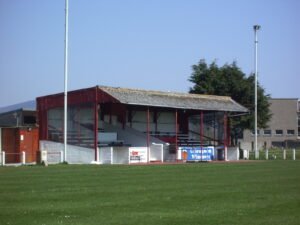
Directly opposite is a covered terrace with a cinder path. However, on my visit the roof of the terrace had disappeared leaving no protection from the elements.
Behind both goals are simple, uncovered grassy areas. 4 high poles and 2 short poles down each flank provide the floodlighting.
For more information on Brora Rangers FC, click here.
Harmsworth Park – Wick Academy

The most remarkable feature of Harmsworth Park is the infamous sloping pitch. I have never seen a football pitch built on such a steep gradient.
Behind the goal at the top of the hill is an almost vertical grass embankment. At the top of this bank there is a large car park over looking the pitch so supporters can watch the match from the comfort of their cars – an attractive prospect in the winter.
At the opposite end of the pitch is an uncovered pathway with only quaint wooden barriers separating supporters from the field of play.
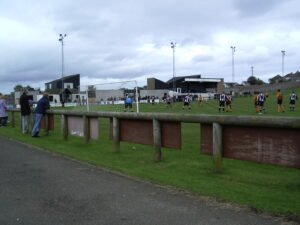
At either side of the football field there are two stands. The North Stand seats 400 and the home and away dug outs are positioned in front of this structure. A separate building behind the stand houses the changing rooms and club offices.

Directly opposite, the South Stand only has one row of 33 seats behind several steps of shallow terracing.
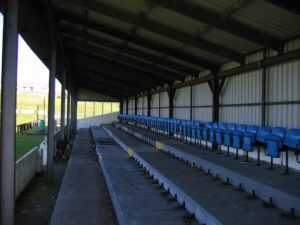
For more information on Wick Academy FC, click here.
***

